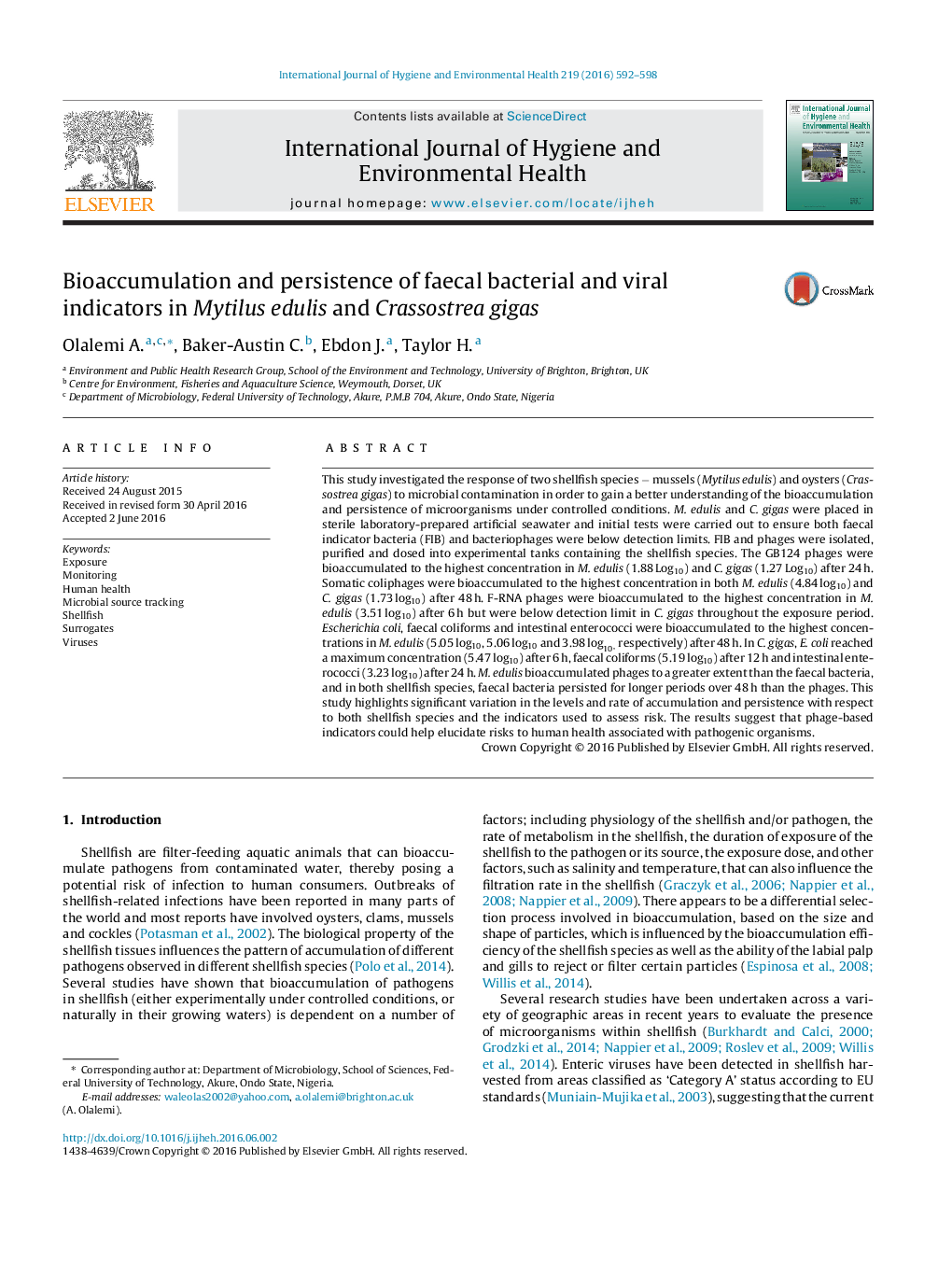| کد مقاله | کد نشریه | سال انتشار | مقاله انگلیسی | نسخه تمام متن |
|---|---|---|---|---|
| 5560648 | 1561880 | 2016 | 7 صفحه PDF | دانلود رایگان |

This study investigated the response of two shellfish species â mussels (Mytilus edulis) and oysters (Crassostrea gigas) to microbial contamination in order to gain a better understanding of the bioaccumulation and persistence of microorganisms under controlled conditions. M. edulis and C. gigas were placed in sterile laboratory-prepared artificial seawater and initial tests were carried out to ensure both faecal indicator bacteria (FIB) and bacteriophages were below detection limits. FIB and phages were isolated, purified and dosed into experimental tanks containing the shellfish species. The GB124 phages were bioaccumulated to the highest concentration in M. edulis (1.88 Log10) and C. gigas (1.27 Log10) after 24 h. Somatic coliphages were bioaccumulated to the highest concentration in both M. edulis (4.84 log10) and C. gigas (1.73 log10) after 48 h. F-RNA phages were bioaccumulated to the highest concentration in M. edulis (3.51 log10) after 6 h but were below detection limit in C. gigas throughout the exposure period. Escherichia coli, faecal coliforms and intestinal enterococci were bioaccumulated to the highest concentrations in M. edulis (5.05 log10, 5.06 log10 and 3.98 log10, respectively) after 48 h. In C. gigas, E. coli reached a maximum concentration (5.47 log10) after 6 h, faecal coliforms (5.19 log10) after 12 h and intestinal enterococci (3.23 log10) after 24 h. M. edulis bioaccumulated phages to a greater extent than the faecal bacteria, and in both shellfish species, faecal bacteria persisted for longer periods over 48 h than the phages. This study highlights significant variation in the levels and rate of accumulation and persistence with respect to both shellfish species and the indicators used to assess risk. The results suggest that phage-based indicators could help elucidate risks to human health associated with pathogenic organisms.
Journal: International Journal of Hygiene and Environmental Health - Volume 219, Issue 7, Part A, October 2016, Pages 592-598